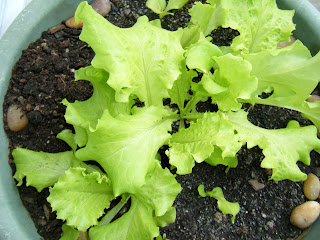Helping Honeybees in Your Backyard
The kind people at Care2 recently asked me to write for their new sustainable food channel, Real Food. My inaugural post, published earlier this week explores how the mysterious honeybee Colony Collapse Disorder and other environmental stresses currently affecting insect pollinators threaten not only honeybees, but also the sustainability of America's food supply.
Though honeybees were not originally native to the Americas — they were brought over the Atlantic from Europe by some early European colonists with a craving for honey — in the centuries since honeybees' introduction, they have become an integral part of the American landscape, and many common food crops depend on honeybees for successful pollination. In fact, about a third of the plant foods we eat every day in the United States are produced with the help of honeybees. Strawberries, watermelon, cherries, blueberries, and peaches are among the many foods that may one day become scarce if both honeybee populations are not protected.
Read my post over at Care2 if you'd like to learn more about our dependence on bees, and the current threats to them.
Over the past few years, I have taken several steps to make my own home garden more friendly to bees and other pollinators. I stringently avoid synthetic pesticides and herbicides, not only in my organic vegetable and herb gardens, but also in my yard as a whole. I have allowed bee-friendly "weeds," like clover, violets, and wild strawberries, to creep in among the grass in my backyard to provide both honeybees and wild native bees with a good source of pesticide-free food.
And I have deliberately planted several herbs and flowers that attract and sustain both bees and butterflies with their flowers, including rue, hyssop, germander, thyme, mint, and lemon balm. Planting a wide variety of flowering plants that attract bees helps ensure that one or another sort of flower is in bloom in my yard from the earliest weeks of spring through the end of autumn, providing a steady source of healthy food for pollinators.
Working to make my yard an attractive and safe place for honeybees to rest doesn't just help the environment — the effort also pays off in my vegetable garden. After all, bees that come for the clover and thyme often stick around to sample the nectar of my watermelon and tomato plants. More safe, healthy food for the bees means more safe healthy food for me.





